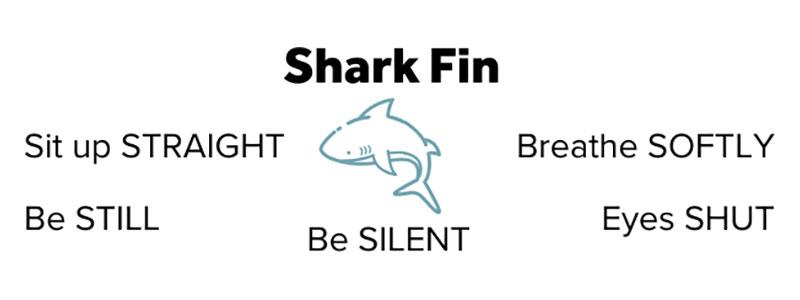From Stressed to Calm in Five Minutes a Day
A sense of wellbeing, gratitude and learning readiness are teachable skills that can be developed with mindfulness practice. Our expert this week is Laura Bakosh, the co-founder of Inner Explorer, a national nonprofit organization dedicated to bringing daily mindfulness programming and stress reduction to children, educators and families in homes and in more than 4,000 Pk-12 schools and early learning organizations, including Florida Early Learning Coalition (ELC) and Head Start Centers.
At a Glance
Stress is at an all-time high, particularly for parents with young children. In fact, a recent Kaiser Family Foundation study showed that 57% of moms and 32% of dads reported worsening mental health. As the COVID-19 crisis continues, chronic stress wreaks havoc, particularly on young brains and bodies. However, there’s a proven way to reduce stress that is easy to learn, accessible and free!
Mindfulness practice helps children and adults feel calmer and less stressed. The practices reduce anxiety and agitation and improve coping skills, emotional regulation and resilience. The key is daily practice, similar to how daily teeth brushing promotes dental health, daily mindfulness practice promotes mental health. Below are five simple steps to integrate mindfulness practice into your day.
Five Steps to Start with Mindfulness
1. Commit to Five Minutes of Mindfulness
- Download the free mindfulness app ‘I AM PRESENT’ to guide your five-minute practice with your kids.
- If you aren’t able to download the app, then use a timer and start with two minutes and work your way up to five.
- Start with breathing and invite your kids to notice each in and out breath (five full breaths is a minute).
- Each day you can invite them to notice something different, maybe the movement of their belly as they breathe, or sounds they may hear, or how other senses are engaged as they breathe.
- Teacher/parent participation is key to success for children
- Kids will recognize the importance when adults model the behavior.
2. Sit up Straight
- Adjust your posture so your back is straight and tall.
- Keep your feet on the floor and your hands on your lap or at your sides.
- Sitting up straight provides a clear pathway for oxygen to flow easily throughout the body.
3. Eyes Closed
- Look down or gently close your eyes.
- Closing your eyes reduces distractions and is a strategy for looking inward.
4. Strive for Five
- Practice five days a week.
- Morning practice will anchor the day.
- Practicing after lunch will restore focus.
5. Persevere
- Silence is new and may initially feel uncomfortable.
- Benefits are realized even if your child is fidgety. Patience is key.
- Like all skills, practice will improve you and your child’s ability to focus attention when you practice mindfulness.
Four Activities to Experience Mindfulness
Here are four activities you can use to continue to practice mindfulness throughout your day, when you’ve already completed your daily mindfulness practice.
1. Belly Breathing
2. Shark Fin

3. Make a Glitter Jar
Supplies:
- Jar (can be plastic water bottle with label removed)
- Glitter glue
- Fine glitter
- Water
- Fill jar almost to the top with water.
- Add one tablespoon of glitter glue.
- Add two tablespoons of fine glitter.
- Screw the lid on tight and shake!
Glitter jars are a great way to demonstrate how mindfulness helps settle thoughts. Shake the bottle and have the kids watch the glitter churn. Explain that when things go wrong, everything seems to go crazy and our thoughts swirl around like the glitter. Ask the kids to take a few deep breaths as the glitter settles. When we stop and breathe, things settle down and we can see and think more clearly. Just as the glitter in the jar settles, so does our mind. With clarity we can make wise choices.
It’s a great visual representation of the results of practicing breathing and stillness in the face of chaos. Even older kids enjoy these, a high school student called the chaos and the glitter jar ‘Hurripain’ and the breathing ‘Calming of the storm.’
4. Download Inner Explorer’s Free “I AM PRESENT” app for families and begin with Day One
- Reduces stress: Guided breathing and relaxation exercises replace fight or flight responses with calm.
- Boosts immune system: Regular practice enhances health, wellbeing and even sleep quality.
- Improves learning: With many students working online, daily use helps kids focus and learn.
- Fosters resiliency: Provides the tools to handle challenges with greater clarity and confidence
More Resources
Brain Futures Recommended
Effective brain fitness interventions during childhood and adolescence produce striking results in improving the executive function skills and prosocial behaviors that are more accurate predictors of academic readiness and life success than IQ or any other performance markers—offering affordable and effective solutions to today’s educational challenges.
Academic Impact
- Bakosh, L., Houlihan, J., Tobias, J., (2016). Audio-guided mindfulness training in schools and its salutary effect on school attainment: Contributing to theory, practice, and policy.
- Bakosh, L., Snow, R., Houlihan, J., Tobias, J., Barbosa-Leiker, C. (2015). Maximizing mindful learning: An innovative mindful awareness intervention improves elementary students’ quarterly grades. Journal of Mindfulness, DOI 10.1007/s12671-015-0387-6
Stress Impact
- Costello, Elizabeth; Lawler, Margaret. (2014) An Exploratory Study of the effects of Mindfulness on Perceived Levels of Stress among School-Children from Lower Socioeconomic Backgrounds. International Journal of Emotional Education, v6 n2 p21-39 Nov 2014.
Mental Health/Well Being
- Raes, F., Grifth, J. W., Van der Gucht, K., & Williams, J. M. G. (2014). School-based prevention and reduction of depression in adolescents: A cluster-randomized controlled trial of a mindfulness group program. Mindfulness, 5(5), 477-486.
- Sanger KL, Thierry G., Dorjee D. (2018) Effects of school-based mindfulness training on emotion processing and well-being in adolescents: evidence from event-related potentials.
Self-Regulation
- Flook, L., Goldberg, S. B., Pinger, L., & Davidson, R. J. (2014). Promoting prosocial behavior and self-regulatory skills in preschool children through a mindfulness-based kindness curriculum. Developmental Psychology.
About the Author

Laura Bakosh, Ph.D., is a mindfulness teacher, researcher and co-founder of Inner Explorer, a non-profit organization that brings mindfulness-based social emotional learning (MBSEL) programming to preschool through high school classrooms. She earned a Bachelor of Science degree from Boston College, a PhD from Sofia University, was trained as a Mindfulness Based Stress Reduction (MBSR) instructor through the Center for Mindfulness at the University of Massachusetts, and recently received an Allstate Foundation Fellowship. She has practiced and studied mindfulness for 27 years. She began teaching the skills to children 13 years ago and quickly realized that it was difficult for children to commit to a daily practice at home, and was difficult for many teachers to lead such practices in the classroom. This was the foundational insight that led to the development of Inner Explorer, an audio-guided program that made it easy for teachers and students (and families) to practice together each day.
Laura has conducted multiple scientific studies evaluating the impact of daily mindfulness practice on student and teacher outcomes, showing participants experience 43% less stress, 15% higher grades, and 60% better emotional regulation and behavior. Laura believes that daily mindfulness practice is the most important education equity and social justice initiative of our time as it can help to close the achievement gap and break the cycle of poverty.
Contact her at LBakosh@InnerExplorer.org